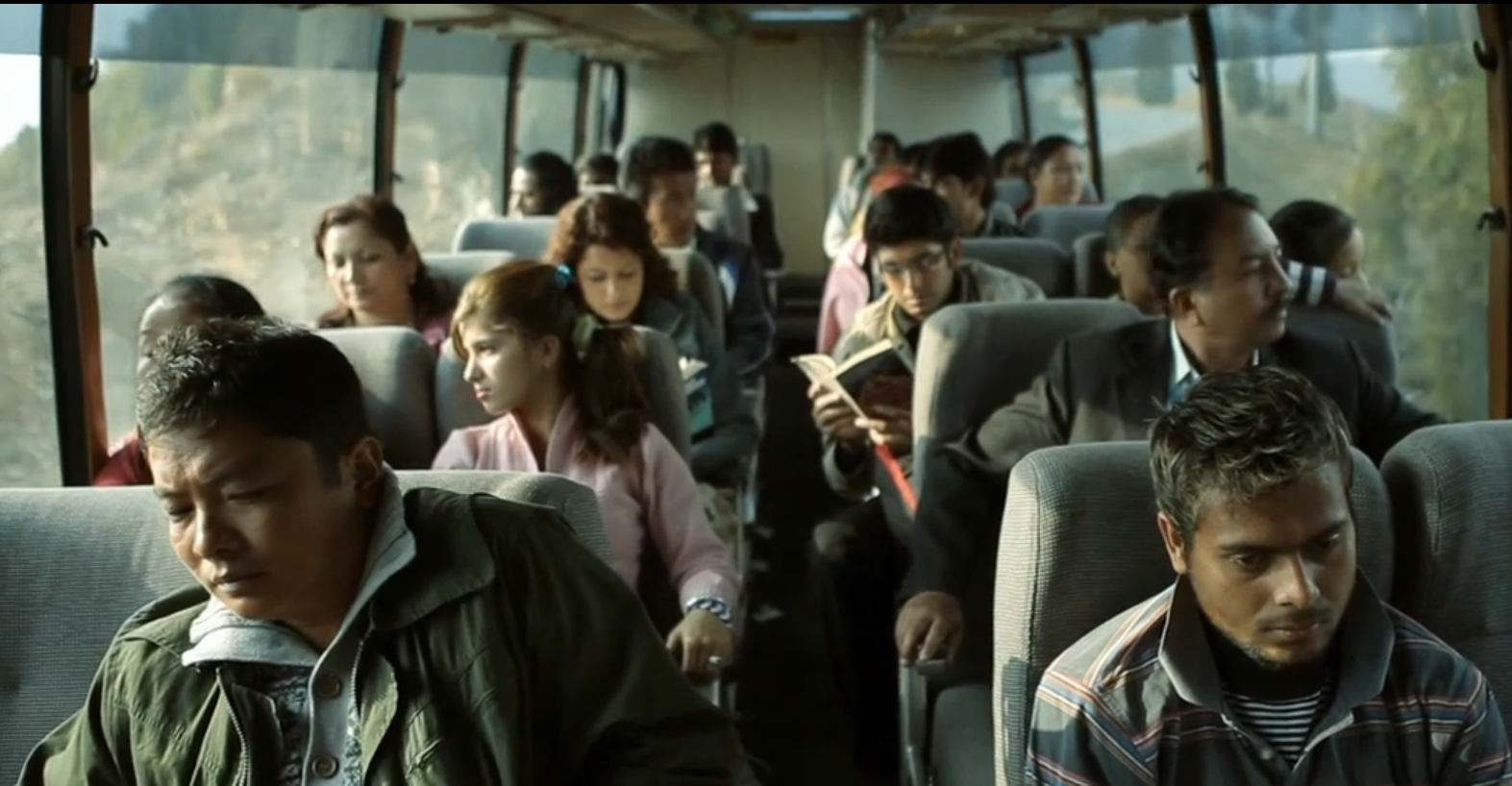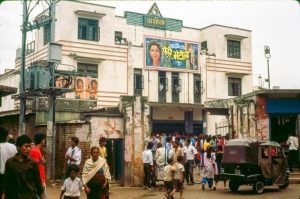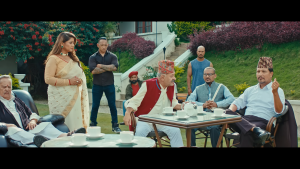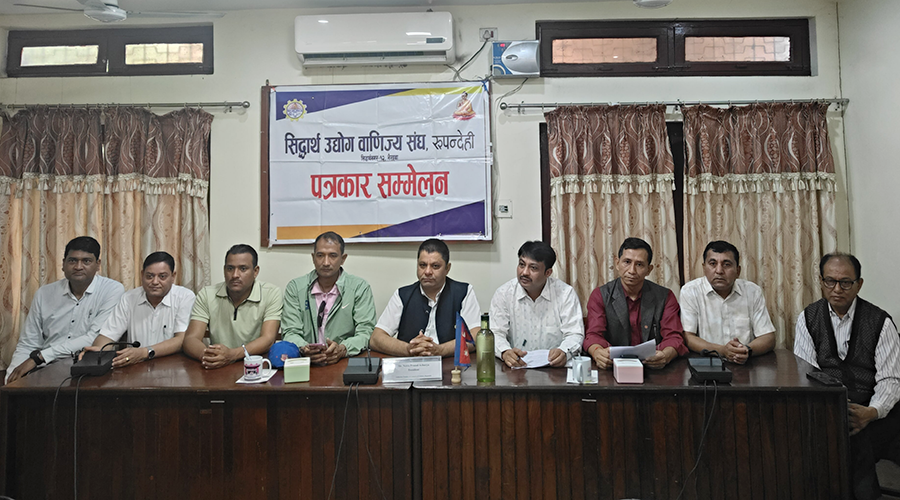
Perhaps this was not the right time for Prem Diwas to hit the screens. First, this is not Valentine’s month. Second, enraged by the arrest of YouTuber Pranesh Gautam for his ‘review’ of a recent Nepali movie, many social media users have called for a boycott of Nepali movies. Key theatres in Kathmandu wore a deserted look on the first day of Prem Diwas on Friday, and the number of shows has already been reduced by Sunday.
Notwithstanding the bad timing, the movie is an average production. Featuring popular lovebirds Priyanka Karki and Ayushman Deshraj Joshi as lead actors, the movie presents a unique love story. There are moments in the movie that surprise the audience with unpredictable turns and twists. Though unrealistic, the story looks interesting and enticing. But, sadly, the director fails to translate these strengths into visuals; the movie looks plain and unpolished.
Unique plot
What would you generally expect in a love story? Traditionally, the hero has a strong desire for the heroine; but there are some villains between them. Now, the hero’s job is to remove the hurdles and win his love. But, Prem Diwas goes one step ahead—its hero and heroine are already committed to their relationship; and there are not apparent hurdles. The story rules out any possibility of a triangular tension when it begins.

In most of Nepali love stories, there are two kinds of antagonist forces: social and economic. On the social side, the hero is blocked by either the heroine’s parents or other villains. On the economic side, the difference between the amounts of their property is poised as a problem. Sometimes, the two elements mix up and a rich villain is created to challenge a poor hero. Going beyond such traditional formulae, Prem Diwas explores psychological movements of a young man. The hurdle for our hero is not in the amount of money he has, or the society he lives in, though it is related to both subtly. The roadblock is inside himself in the form of his own fears and ambitions, his own lack of patience and understanding, and his own error of judgment.
Hence, the movie turns out to subtle and deep; it tries to demonstrate the invisible clash inside a man’s psyche. Nonetheless, the source of his conflict is his society’s expectation from an ideal and loving husband—that he should be rich to make his wife happy. However, the movie obscures this sociological connection, rather creates another external, more visible conflict on the surface: A villain is brought in to fight with the hero. This clash covers up major antagonist forces and keeps the audience in illusion. This is an artistic experiment.
Immature making
But, the director has failed to effectively communicate these messages. His work looks immature in many respects. For example, the movie begins with a song, and the the audience later knows that it was the hero’s dream. After a boring chitchat with his confidant, another song follows, during which the hero and the heroine are shown visiting shopping centres, cafes and parks together. The audience can only see the real story beginning only after that. It is too late. The director could have shown the audience the crux of the story—that he wants himself to be rich or leave the girlfriend–by deleting one of these two songs and the hero’s conversation with his confidant.
The use of background score and its timing is another problem. Whereas the theme song continues to be heard in the background for almost half of the screen time, no other background sound has been used to create special effects. Other songs, however, sound melodious.

Likewise, there isn’t any variety in the camerawork. All the scenes are traditionally shot with an average distance between the camera and the objects. The visuals look nice only because they are shot in beautiful tea gardens of Ilam and betelnut farms of Jhapa.
The storytelling is plain. When characters have to tell stories of their past, the director makes them tell them orally, instead of showing the flashback scenes. When the audience hears from the hero about the story of the heroine’s past life, they naturally look for a brief scene; but the one minute oral storytelling disappoints them.
Acting
The director’s incompetence is more apparent in the selection of the cast. Bishal Kharel, who plays the third-most significant character in the movie after Karki and Joshi, fails to impress. He maintains eye contact with other characters and the camera well when he speaks, but cannot reflect implied meanings of his words in his tone and facial expressions. His gesture looks artificial throughout the movie. It is more apparent when he is with experienced and skilled actors like Karki and Joshi.

The duo have improved their skills in their movie. Joshi looks quite different from his signature character– his beard is left untrimmed in most scenes of the second half; but it perfectly suits his role as a crazy and frustrated lover. Though Karki still has some space to improve her dialogue delivery, she expresses every different emotion in her face as the role demands.
Shree Krishna Luitel impresses the audience in his role as the hero’s confidant. Shiva Shankar Rijal and Uttam KC have added humours to the movie.
Verdict
Prem Diwas is not something that you cannot miss. But still, if you have time, money and interest, the movie is worth watching.
—
Prem Diwas
Genre: Love story, tragedy
Runtime: 115 minutes
Screenwriter: Pradeep Bharadwaj
Director: Yogesh Ghimire
Cast: Priyanka Karki, Ayushman Deshraj Joshi, Bishal Kharel, Hemanta Budhathoki, Shiva Shankar Rijal, Uttam K.C., Sanjay Neupane, Shree Krishna Luitel
2/5

























